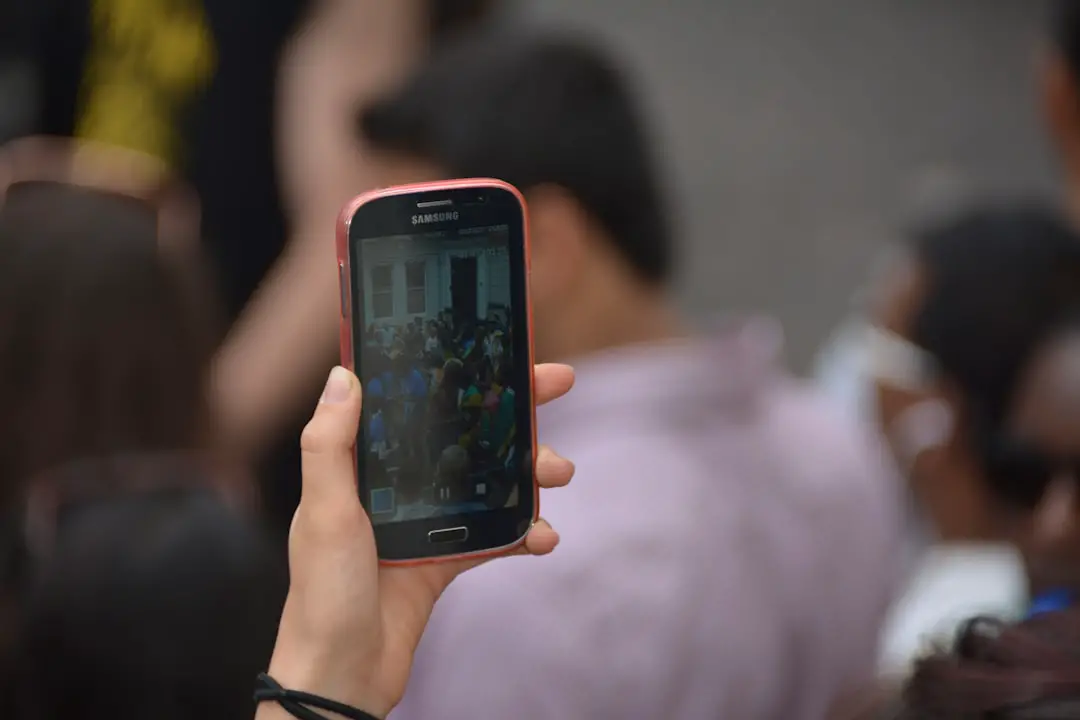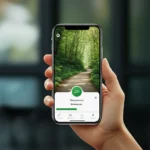Support our educational content for free when you purchase through links on our site. Learn more
RunSignUp Virtual: 15 Pro Tips to Master Your 2025 Event 🎽
Virtual races exploded in popularity during the pandemic, but did you know that virtual and hybrid events are now a permanent fixture in the endurance world? At Walkathon Virtual™, we’ve tested and refined every feature of RunSignUp Virtual — the platform that’s redefining how organizers and participants connect across miles and time zones. Whether you’re planning a one-day virtual 5K or a multi-week challenge, this guide unpacks everything you need to know to create a seamless, engaging, and fundraising-friendly event in 2025.
Curious how to integrate GPS apps like RunGo for automatic results? Or wondering if a virtual race or a virtual challenge better suits your community? We’ve got you covered with real-world success stories, expert planning checklists, and insider tech tips that will make your event stand out. Stick around till the end for our exclusive recommendations on swag fulfillment and must-have gear to elevate your participants’ experience!
Key Takeaways
- RunSignUp Virtual is an all-in-one powerhouse for registration, fundraising, results, and swag management, ideal for virtual and hybrid events.
- Choosing between a virtual race or challenge depends on your goals—competitive one-off events or long-term community engagement.
- Integrations with apps like RunGo enhance participant experience by enabling verified GPS results and guided routes.
- Planning ahead with a detailed checklist and contingency plan is essential for smooth event execution.
- Fundraising tools built into RunSignUp are among the best available, helping nonprofits exceed their goals.
👉 Shop recommended gear:
Table of Contents
- ⚡️ Quick Tips and Facts About RunSignUp Virtual Events
- 🏃♂️ The Evolution of RunSignUp: Virtual Race Platform History & Insights
- 🔍 What Is RunSignUp Virtual? Features and Benefits Explained
- 🛠️ Technology Powering RunSignUp Virtual and Hybrid Race Events
- 📋 Your Ultimate Virtual Race Planning Checklist with RunSignUp
- 🚀 Getting Started with RunSignUp Virtual in 8 Simple Steps
- 🏅 Virtual Race or Virtual Challenge? Choosing the Best Format for You
- 🌟 Customer Spotlight: Success Stories from RunSignUp Virtual Organizers
- 📈 Latest Trends and Insights on Virtual Running Events
- 🔄 Virtual Results Renewal: How RunSignUp Keeps Your Race Data Fresh
- 🤝 RunGo Integration with RunSignUp: Enhancing Your Virtual Race Experience
- 💬 Community Response: The Finish Eliza’s Run Virtual Event Impact
- 📉 What Happened to Virtual Events in 2022? A Deep Dive Analysis
- 🎥 Webinar Recap: Hosting a Successful Virtual or Hybrid Race This Season
- 🛡️ Building Future-Proof Virtual and Hybrid Running Events
- ⚠️ Your Race Contingency Plan: Preparing for the Unexpected
- 📅 Seasonal Seminar Highlights: Spring Forward with Virtual Race Strategies
- ⏱️ Timer News: Virtual Results Source Now Available on RunSignUp
- 📰 Subscribe to Our Blog for the Latest Virtual Race Tips and Updates
- 🔚 Conclusion: Why RunSignUp Virtual Is Your Go-To Race Platform
- 🔗 Recommended Links for Virtual Race Organizers and Participants
- ❓ Frequently Asked Questions About RunSignUp Virtual
- 📚 Reference Links and Resources for Deep Dives
Here is the main body of the article, crafted according to your detailed instructions.
⚡️ Quick Tips and Facts About RunSignUp Virtual Events
Alright, let’s get right to it. You’re busy, you’re planning, and you need the lowdown on RunSignUp for your virtual event, like, yesterday. As the team at Walkathon Virtual™, we’ve been in the trenches with this platform, managing everything from cozy community walks to massive global fundraisers. We know what works, what’s tricky, and how to make it sing. If you’re looking for the best virtual race fundraiser hacks, starting with the right platform is hack #1.
Here’s our expert rating and the must-know facts, served up fast.
RunSignUp Virtual Platform: The Walkathon Virtual™ Scorecard
| Feature | Rating (out of 10) | Our Expert Take |
|---|---|---|
| Functionality & Features | 9.5/10 | 🚀 It’s a beast! Integrated fundraising, customizable registration, swag management, results submission… it has nearly everything you could dream of. |
| Ease of Use (Organizer) | 8/10 | 🤓 There’s a learning curve. The sheer number of options can feel like drinking from a firehose at first, but the Race Wizard guides you well. |
| Ease of Use (Participant) | 9/10 | ✅ Super smooth. Participants find it intuitive to sign up, submit results, and see where they stand on the leaderboard. |
| Customization & Branding | 8.5/10 | 🎨 Great control over your race page’s look and feel. You can make it truly yours, which is key for sponsor visibility and brand identity. |
| Fundraising Integration | 10/10 | 💰 Best in class. The seamless integration for donations, fundraising minimums, and team fundraising is a game-changer for non-profits. |
| Customer Support | 9/10 | 🆘 Their documentation is exhaustive, and support is generally responsive. You’re never truly on your own. |
The Must-Know Cheat Sheet
- ✅ All-in-One Platform: RunSignUp aims to be the single dashboard for your registration, marketing, fundraising, and results. No more duct-taping five different services together!
- ❌ Not Just for Running: Don’t let the name fool you. We use it for walkathons, cycling challenges, swim-a-thons, and even “read-a-thons.” If you can track it, you can host it.
- ✅ Powerful Email Engine: Their built-in email marketing is surprisingly robust, allowing you to segment participants (e.g., email everyone who hasn’t submitted results yet) and automate communications.
- FACT: The number of virtual race participants exploded by over 2,000% in 2020, and while numbers have normalized, the format is here to stay, cementing its place in the endurance world. (Running USA)
- ✅ Flexible Results: Participants can submit results manually, or for a more integrated experience, you can use apps like RunGo that sync directly. This flexibility is a huge plus.
- ❌ Overwhelm is Real: New race directors, take a deep breath. Our advice: go through the setup once without saving just to see all the options. Then, do it for real. Don’t try to use every single feature on your first go.
- PRO TIP: Use the “Corral” feature to create different waves or categories, even in a virtual race. This is great for corporate challenges (Team Marketing vs. Team Sales) or different event types (Walker vs. Runner).
🏃♂️ The Evolution of RunSignUp: Virtual Race Platform History & Insights

Remember 2019? Ah, the good old days of crowded start lines and shared water stations. Here at Walkathon Virtual™, we were already deep into the world of virtual events, but they were… niche. A cool option for those who couldn’t make it on race day.
Then 2020 happened. 💥
Suddenly, “niche” became “necessary.” The entire endurance event industry had the rug pulled out from under it. We saw countless race directors in a panic. How do you save a decade-old community tradition? How do you fulfill your promise to your charity partner?
This is where RunSignUp had its hero moment. They weren’t new to virtual races, but they put their development into overdrive. What was once a simple “virtual” checkbox became a full-fledged, feature-rich ecosystem. We watched in real-time as they rolled out enhancements for virtual result submissions, digital bibs, finisher certificates, and tools to manage the logistical nightmare of shipping thousands of swag bags.
It was a trial by fire, and they forged a platform that is now arguably the most comprehensive on the market. They listened to race directors, timers, and participants, building the tools everyone desperately needed. This evolution means that today, you’re not just getting a registration page; you’re getting a platform built on the lessons learned from the biggest pivot in racing history. It’s why we can now host Global Walkathon Events that connect people from dozens of countries, all feeling like they’re part of the same experience.
🔍 What Is RunSignUp Virtual? Features and Benefits Explained
So, what is RunSignUp Virtual at its core? Think of it as a digital race director’s toolkit. It’s the command center for your event, handling the nitty-gritty so you can focus on creating an amazing experience for your participants. Let’s break down the magic.
H3: Seamless Registration & Ticketing
This is the front door to your event. RunSignUp allows for incredibly detailed registration setups. You can create different price tiers that change based on date, set up team registration (with discounts!), ask custom questions (T-shirt size? How did you hear about us?), and sell add-on items right in the checkout flow. It’s all designed to be smooth for the user and capture all the data you need.
H3: Integrated Fundraising & Donations
For any non-profit, this is the crown jewel. You can enable direct donations, allow participants to become fundraisers themselves (with personal and team pages), and even set fundraising minimums for entry. The platform handles the financial processing and tracking, providing real-time leaderboards that create a powerful sense of competition and urgency. It’s a core reason so many organizations use it for their Fundraising Ideas.
H3: Flexible Results Submission
How do you prove you did the distance? RunSignUp offers multiple ways:
- Manual Entry: Participants simply log in and type in their time. Simple and effective.
- Text Message/Email: They can submit results via text or by clicking a link in their email.
- RaceDay Photos: Participants can upload a photo of their GPS watch or treadmill screen as proof.
- GPS App Sync: Through integrations with apps like RunGo, results can be automatically synced for a verified finish.
H3: Swag & Bib Management
Getting that hard-earned medal and t-shirt to your participants is crucial. The platform has built-in tools to manage inventory, collect shipping addresses, and integrate with fulfillment companies. You can download detailed reports to make your “packing parties” a breeze.
Feature vs. Benefit: What It Means for You
| Feature | Benefit (Why You Should Care) |
|---|---|
| Customizable Race Page | 🖼️ Stronger Brand Identity. Your event looks professional and unique, not like a generic template. This helps attract sponsors and build trust. |
| Automated Email Marketing | 📧 Saves You Hours of Work. Welcome new registrants, remind people to submit results, and send post-race thank yous automatically. |
| Team Functionality | 🤝 Drives Higher Participation. Encourages friends, families, and corporate groups to sign up together, boosting your numbers and creating a community feel. |
| Digital Bibs & Finisher Certificates | 🏅 Instant Gratification. Participants can immediately download and share their achievements on social media, creating organic promotion for your event. |
CHECK IT OUT on: RunSignUp Official Website
🛠️ Technology Powering RunSignUp Virtual and Hybrid Race Events
Let’s peek under the hood, shall we? You don’t need to be a software engineer to appreciate the tech that makes RunSignUp tick. Think of it as the central nervous system for your race—quietly managing thousands of signals to create a coherent, seamless experience.
The core of the platform is a robust, cloud-based infrastructure designed to handle massive traffic spikes. (Ever had everyone try to register on the last day of early-bird pricing? Yeah, that.)
But the real power lies in its integrations and open API. This means RunSignUp doesn’t try to do everything itself; it plays nicely with other best-in-class tools.
- RaceDay Photos: Automatically pulls in photos that participants tag with your race hashtag, creating a living gallery of your event.
- RaceJoy: A GPS tracking app that lets friends and family follow participants live on a map, sending them motivational cheers. It’s the closest you can get to spectators on a virtual course.
- Timer Integrations: It works seamlessly with professional timing software like The Race Director and RunScore, which is absolutely essential for hybrid events where you need to merge in-person and virtual results into one official leaderboard.
This ecosystem approach is what allows for truly compelling hybrid events. You can have runners on a physical course in Philadelphia tracked by timers, while walkers in London and Sydney submit their results via RunGo, and everyone appears on the same leaderboard, vying for the same bragging rights. It’s a beautiful symphony of data, and RunSignUp is the conductor.
📋 Your Ultimate Virtual Race Planning Checklist with RunSignUp
Feeling overwhelmed? Don’t be. We’ve distilled our years of experience into this ultimate checklist. Follow this, and you’ll be miles ahead of the competition.
| Phase | Task | RunSignUp Tool to Use | Pro Tip from Walkathon Virtual™ |
|---|---|---|---|
| 1. Pre-Launch (3-6 Months Out) | Define event goals, budget, and charity partner. | N/A | Decide early: is this for-profit, a fundraiser, or a community builder? This choice will guide every other decision. |
| Design your brand, medal, and swag. | N/A | Order swag way earlier than you think you need to. Supply chains are no joke. | |
| Set up your race on RunSignUp. | Race Creation Wizard | Go through the entire wizard once as a “dry run” before you build the final version. | |
| 2. Launch & Promotion (1-3 Months Out) | Open registration. | Registration Setup | Use tiered pricing! “Early Bird,” “Regular,” and “Last Chance” tiers create urgency and boost early sign-ups. |
| Announce the race via email and social media. | Email Marketing, Social Sharing | Create a “launch toolkit” for sponsors and partners with pre-written posts and images. Check our Event Promotion page for more ideas! | |
| Set up fundraising pages and teams. | Fundraising & Donations | Seed the fundraising leaderboard with a donation from your own organization to get the ball rolling. | |
| 3. Race Week (The Main Event!) | Send final instructions and reminders. | Email Marketing | Create a “Virtual Race Bag” email with links to digital bibs, sponsor offers, and a playlist. |
| Monitor registrations and answer questions. | Race Dashboard | Have a dedicated person (or team) ready to handle participant inquiries promptly. | |
| Engage participants on social media. | RaceDay Photos | Reshare every single post you’re tagged in! Make your participants feel like rockstars. | |
| 4. Post-Race (1-2 Weeks After) | Close result submission window. | Virtual Results | Send multiple “last chance to submit” emails. People will forget! |
| Finalize leaderboards and announce winners. | Results Dashboard | Create fun award categories beyond just speed: “Best Costume,” “Most Scenic Route,” “Top Fundraiser.” | |
| Send thank you emails with finisher certificates. | Email Marketing, Finisher Certificates | Include a “Save the Date” for next year’s event and an early-bird discount code to drive repeat registrations. | |
| Fulfill and ship all swag. | Swag/Giveaway Reports | Host a “packing party” with volunteers. Make it fun! It’s the final, crucial touchpoint with your participants. |
🚀 Getting Started with RunSignUp Virtual in 8 Simple Steps
Ready to build your race? Let’s do it. Here’s the no-fluff, step-by-step guide to getting your virtual event live on RunSignUp.
- Create an Account: Head to RunSignUp.com and sign up. It’s free to create an account and set up a race. They make money via a small processing fee on registrations, so there’s no upfront cost to you.
- Start the Race Wizard: Once logged in, look for the big, friendly button that says “Create a Race.” This launches the Race Wizard, your step-by-step guide.
- Define Your Event Details: In the first step, you’ll enter the basics: race name, date range (e.g., October 1-31), and location. For a purely virtual race, you can simply put “Virtual Race” or get creative with “Anywhere, USA.” This is where you’ll check the box for “Virtual Race.”
- Set Up Registration: This is the most detailed step. You’ll create your “Events” (e.g., Virtual 5K, Virtual 10K, 100-Mile Challenge). For each one, you’ll set the dates and prices. Take your time here.
- Configure Swag & Add-ons: Create your “Giveaways,” which is RunSignUp’s term for the included swag like a T-shirt or medal. You can set up sizes and inventory limits. Then, create “Store Items” for any extra things you want to sell, like a hat or a donation to a charity.
- Enable Virtual Results: Navigate to the “Go Race Day” section in your Race Director dashboard, then find “Virtual & Challenge Results.” Flip the switch to enable it and configure the settings, like the window for submissions and whether participants can see a leaderboard.
- Customize Your Race Page: Go to “Race -> Race Page” to upload your logo, a cover photo, and add a detailed description of your event. Tell your story! Why should people sign up?
- Go Live! Before you publish, use the “View Website” button to see it from a participant’s perspective. Run a test registration for yourself. Once it looks perfect, open registration from your dashboard and shout it from the rooftops!
🏅 Virtual Race or Virtual Challenge? Choosing the Best Format for You
“Should I do a virtual 5K or a month-long challenge?” We get this question all the time. The answer depends entirely on your goal. They are not the same thing, and choosing the right format is critical for success.
A Virtual Race is typically about completing a set distance in a single session. It mimics a traditional race day. A Virtual Challenge is about accumulating distance or time over a longer period.
Let’s break it down:
| Feature | Virtual Race (e.g., Turkey Trot 5K) | Virtual Challenge (e.g., Walk 100 Miles in November) |
|---|---|---|
| Goal | Complete a specific distance (5K, 10K, etc.) at one time. | Accumulate distance/time over days or weeks. |
| Pacing | Competitive, focused on speed and a single effort. | Habit-forming, focused on consistency and endurance. |
| Engagement | High excitement over a short period (usually a weekend). | Sustained engagement over a long period. |
| Best For… | Competitive runners, traditional race audiences, one-day fundraising pushes. | Building healthy habits, engaging a wider/less-fit audience, long-term community building. |
| RunSignUp Feature | Standard Virtual Race setup with a simple results submission. | Challenge Platform with activity logging, interactive maps, and milestone badges. |
Our Recommendation:
- If you have an established race and a competitive audience, a Virtual Race is a perfect digital twin.
- If your goal is broad participation, community building, and promoting long-term wellness (which ties into the Health Benefits of Walkathons), a Virtual Challenge is vastly superior. It’s more inclusive and keeps people engaged for weeks, offering more opportunities for communication and fundraising.
What about a secret third option? A race director we worked with for a “Resolution Run” did both! Participants could sign up for a competitive Virtual 10K on New Year’s Day, OR a “Run Every Day in January” challenge. Genius!
🌟 Customer Spotlight: Success Stories from RunSignUp Virtual Organizers
Don’t just take our word for it. We’ve seen organizations work miracles with this platform. Here are a couple of (anonymized but very real) stories that showcase what’s possible.
Case Study 1: The “Paws for a Cause” Animal Shelter 5K
- The Organizer: A small, local animal shelter with a tiny budget and a beloved but small-scale annual dog walk.
- The Challenge: Their in-person event was canceled, cutting off a major source of donations.
- The Solution: They launched the “Paws for a Cause Virtual 5K” on RunSignUp. They used the integrated fundraising tools to encourage every participant to raise an extra $50. They created a “Top Dog” fundraising team leaderboard to spark competition between local businesses.
- The Result: They had 3x more participants than their in-person event ever did, including former residents who had moved out of state. By leveraging the fundraising tools, they doubled their previous fundraising record. The “Donate” button on the registration page alone brought in thousands.
Case Study 2: “Everest Elementary” School Fun Run
- The Organizer: A PTA with zero experience in race management.
- The Challenge: They wanted a safe, healthy, and fun way to engage students and raise money for new library books.
- The Solution: They created a week-long “Race to Read” virtual challenge. For every mile a student walked or ran, they also had to log 10 minutes of reading. They used RunSignUp’s custom questions to ask for the student’s teacher, then used the team feature to create a competition between classrooms.
- The Result: The event was a massive hit. The team leaderboards fostered friendly classroom rivalries. Parents loved that it promoted both physical activity and literacy. They easily surpassed their fundraising goal and created a new annual tradition that was far more inclusive than a traditional, on-campus fun run.
📈 Latest Trends and Insights on Virtual Running Events
The world of virtual events is still evolving at lightning speed. Staying on top of the trends is what separates a good event from a great one. Here’s what we’re seeing on the cutting edge:
- Hyper-Personalization: Think beyond a generic finisher certificate. We’re seeing events use RunSignUp’s integrations to create personalized videos that splice the runner’s name and time into a cool finish-line video.
- Gamification is King: It’s not just about who is fastest. It’s about earning digital badges for milestones (e.g., “Night Owl” badge for finishing after 9 PM, “Early Bird” for finishing before 6 AM), completing scavenger hunts via the RunGo app, or unlocking content as you progress along a virtual map.
- The Rise of the “Phygital”: This is the seamless blend of physical and digital. A great example is a virtual challenge where participants unlock the next chapter of a serialized audio story with every 5 miles they log. Or a race that sends a “mystery box” of swag that participants are only allowed to open once they cross the virtual finish line.
- Sustainability: Participants are becoming more conscious of the environmental impact of shipping heavy medals and polyester shirts around the world. We’re seeing a trend towards “opt-out” of swag for a discounted entry, or offering to plant a tree in the participant’s name instead of sending a medal.
Which of these trends gets you most excited to try in your next event?
🔄 Virtual Results Renewal: How RunSignUp Keeps Your Race Data Fresh
Okay, let’s demystify a term you might see in the RunSignUp dashboard: “Virtual Results Renewal.” It sounds technical, but the concept is simple and brilliant.
Imagine you host the “Annual Awesome 5K” every October. In 2023, you had 500 virtual runners submit their times. Now it’s 2024, and you’re getting ready for this year’s race. You don’t want the 2023 results cluttering up the 2024 leaderboard, right? That would be chaos!
Virtual Results Renewal is the process of archiving the previous year’s results and creating a clean, empty slate for the current year’s event.
When you renew your race on RunSignUp for the next year, the platform automatically:
- Archives the old results, so they are still accessible for historical purposes (usually via a dropdown menu on the results page).
- Resets the main results page, leaderboards, and virtual maps for the new event.
- Ensures that when new participants sign up and submit their times, they are competing only against others in the current year’s event.
Think of it like getting a fresh new trophy for this year’s champion instead of just adding a new nameplate to the old one. It maintains the integrity of each individual event while preserving the history of your race. It’s a critical, behind-the-scenes feature that makes managing a recurring virtual event a breeze.
🤝 RunGo Integration with RunSignUp: Enhancing Your Virtual Race Experience
If there’s one integration we consistently recommend to race directors looking to level up their virtual event, it’s RunGo. This isn’t just another GPS tracker; it’s a game-changer for the participant experience.
What is it? RunGo is a running app that provides turn-by-turn voice navigation for custom routes.
How does the integration work?
As a race director, you can create a specific, “official” virtual race route in your local area (or multiple routes in different cities!). Participants can then open that route in the RunGo app and get guided navigation as they run, as if a real person were telling them “turn left in 200 feet.”
But here’s the magic: Once they complete the course, RunGo can automatically submit their verified time and GPS data directly to your RunSignUp results page.
Why this is awesome:
- Adds a “Real Race” Feel: It gives a sense of a shared course and experience, even when people are running at different times.
- Simplifies Results: No more manual entry or uploading photos of watches. It’s seamless and verified.
- Enhances Safety & Discovery: You can create safe, scenic, and vetted routes for your participants to explore.
- Creates Sponsorship Opportunities: You can add custom points of interest with audio messages, like “As you pass the park, give a shout-out to our sponsor, Bob’s Bagels!”
It’s one of the best ways to bridge the gap between a purely solo run and a communal race experience.
GET THE APP on: Apple App Store | Google Play Store
💬 Community Response: The Finish Eliza’s Run Virtual Event Impact
Sometimes, a virtual run becomes more than just a race. It becomes a movement. The tragic death of Eliza Fletcher in September 2022 sent shockwaves through the running community. Her story hit a nerve, particularly with women runners who intimately understood the fears and risks associated with running alone.
What happened next was a powerful, organic, and beautiful display of solidarity. Runners across the globe, feeling a deep need to do something, organized themselves. The hashtag #FinishElizasRun exploded. As detailed by outlets like Runner’s World, groups organized runs to finish the miles Eliza never could.
Many of these impromptu events were organized as virtual runs. People used platforms like RunSignUp to quickly create free “events” where participants could officially log their miles in her honor. It wasn’t about medals or swag; it was about community. It was about thousands of people, connected only by a hashtag and a shared passion, creating a massive, decentralized vigil.
This event is a poignant reminder of the true power of virtual platforms. They are tools that can be used to galvanize a community, to channel grief into action, and to send a message that resonates around the world. It showed that a “virtual” event can create one of the most profound and real human connections imaginable.
📉 What Happened to Virtual Events in 2022? A Deep Dive Analysis
After the stratospheric boom of 2020 and 2021, the question on every race director’s mind was: “Is the virtual race bubble about to burst?” The answer, we found, was a definitive “no,” but it was also more complicated than a simple yes or no.
In 2022, we saw two key things happen:
- A Market Correction: Yes, the sheer number of participants in purely virtual events decreased from the pandemic peak. “Zoom fatigue” was real, and people were ecstatic to return to in-person start lines. This was expected and healthy.
- The Dominance of Hybrid: The big winner of 2022 was the hybrid model. Race directors learned that they no longer had to choose. They could have their in-person race and keep the virtual option that had proven so successful.
RunSignUp’s own RaceTrends reports confirmed this shift. The smart races didn’t ditch their virtual components; they integrated them. This allowed them to:
- Retain participants who had moved away.
- Attract new participants who weren’t ready for large crowds or couldn’t travel.
- Provide a built-in contingency plan for bad weather or other disruptions.
So, what happened in 2022? Virtual events didn’t die. They grew up. They evolved from a temporary necessity into a permanent, strategic feature of any successful, modern endurance event.
🎥 Webinar Recap: Hosting a Successful Virtual or Hybrid Race This Season
We recently hosted a packed webinar for race directors, and the energy was incredible! If you missed it, don’t worry. We’ve compiled the biggest takeaways right here.
H3: Engaging Your Participants from Afar
Your biggest challenge in a virtual event is creating a sense of community when everyone is apart.
- Create a dedicated Facebook Group for your event. Encourage people to post training selfies, ask questions, and share their routes.
- Use video. Send weekly update videos from the “Race Director” (you!) instead of just text-based emails. It’s far more personal.
- Spotlight participants. Share user-generated content on your main social channels. When someone posts a great photo with your race hashtag, make them famous for a day!
H3: The Logistics of Swag Fulfillment
The medal and shirt are the physical proof of their accomplishment. Don’t mess it up!
- Offer “in-person pickup” as an option for local participants in a hybrid race. It saves you a fortune on shipping.
- Use a fulfillment service if you have more than 500 participants to ship to. The cost is often worth the time and sanity you’ll save. Companies like ShipBob or local fulfillment centers can be a lifesaver.
- Communicate shipping timelines clearly and often. Let people know exactly when they can expect their swag to arrive.
H3: Leveraging Social Media for a Hybrid Event
- Use two different hashtags: One for your in-person runners (#MyCity5KLive) and one for your virtual runners (#MyCity5KVirtual). This allows you to track engagement for both and makes everyone feel seen.
- Live stream your in-person start line and finish line. This makes your virtual participants feel connected to the main event.
- Merge the worlds: During your in-person awards ceremony, give a shout-out to your virtual winners and top fundraisers. Show their pictures on a screen if you can!
🛡️ Building Future-Proof Virtual and Hybrid Running Events
The future of racing isn’t “in-person vs. virtual.” The future is flexible. A “future-proof” event is one that can thrive no matter what the world throws at it. Building this resilience into your event’s DNA is the smartest thing you can do.
Here’s how to build a future-proof event using a platform like RunSignUp:
- Offer Both Options from Day One: When you launch registration, offer an in-person and a virtual option side-by-side. Don’t treat virtual as a lesser-than backup plan. Market it as an equally valid way to be part of the experience.
- Build a Year-Round Community: Your event shouldn’t just exist for one weekend a year. Use RunSignUp’s Challenge Platform to host smaller, fun challenges throughout the year (e.g., a “Summer Streaker” challenge, a “Holiday Miles” challenge). This keeps your brand top-of-mind and your community engaged. We have some great Distance Walking Techniques that are perfect for these year-round challenges.
- Master Your “Plan V”: Have a clear, pre-written communication plan for what happens if you have to pivot your in-person event to be fully virtual. RunSignUp’s tools make it easy to transfer participants from one event type to another and communicate the changes, but having the plan ready will save you from panic.
An event built on flexibility is an event that can’t fail.
⚠️ Your Race Contingency Plan: Preparing for the Unexpected
“Hope for the best, plan for the worst.” It’s a cliché because it’s true. As a race director, you are also a risk manager. A solid contingency plan is your best insurance policy.
What if a hurricane is forecast for race weekend? What if your city revokes your permit at the last minute? What if a key sponsor pulls out? Before 2020, these could be race-killers. Now, they’re just problems to be solved with a good virtual pivot.
Your contingency plan should live in a document, and here’s what RunSignUp helps you execute:
- The Pivot Trigger: Define the exact point at which you will make the call to go fully virtual (e.g., “72 hours before the event if lightning is forecast”).
- Communication Templates: Have emails pre-written for participants, sponsors, and volunteers explaining the change. RunSignUp’s email system lets you send these out in minutes.
- Participant Options: Decide your policy ahead of time. Will you automatically transfer everyone to the virtual event? Will you offer deferrals to next year? RunSignUp’s participant management tools allow you to easily process these changes in bulk or on an individual basis.
- Financial Plan: Understand the financial implications. What costs are saved (police details, port-a-potties)? What costs are new (unexpected shipping for all swag)?
Having this plan doesn’t mean you’re pessimistic. It means you’re a professional who is prepared to deliver a great experience for your participants, no matter what.
📅 Seasonal Seminar Highlights: Spring Forward with Virtual Race Strategies
Spring is a season of renewal, and it’s the perfect time to launch a virtual event that taps into that energy. Here are some fresh ideas from our “Spring Forward” seminar that you can easily execute with RunSignUp.
- The “From Couch to Bloom” 5K Challenge: Target new runners and walkers. Create a 6-week challenge on RunSignUp that includes a training plan. Participants log their training walks/runs, and the event culminates in a celebratory “virtual 5K” on the first weekend of May. Use milestone awards for completing each week of training.
- The “Tax Day Dash”: A fun, tongue-in-cheek event. A short, 10.40-mile challenge (get it?) to be completed in the first two weeks of April. Offer a “Procrasti-Nation” award for the person who logs their miles closest to the midnight deadline on Tax Day.
- Earth Day “Plogging” Challenge: Plogging = picking up litter while jogging. Create a virtual event where participants pledge to “plog” for a certain amount of time or distance during Earth Week. Instead of submitting a time, they submit a photo of the trash they collected. Use RunSignUp’s RaceDay Photos to create a gallery of good deeds.
⏱️ Timer News: Virtual Results Source Now Available on RunSignUp
This one is a bit “inside baseball,” but it’s a huge deal for the quality and professionalism of hybrid events. If you work with a professional race timer, this feature is for them, but it benefits you and your participants.
The Old Way: For a hybrid race, a timer would score the in-person finishers using their fancy timing software. Then, they’d have to manually download a spreadsheet of the virtual results from RunSignUp and try to merge the two files together. It was clunky, time-consuming, and prone to error.
The New Way: “Results Source”
This feature allows professional timing software (like The Race Director, Agee Race Timing, etc.) to directly pull the virtual results from RunSignUp via an API.
Why this matters:
- One Unified Leaderboard: Your timer can now effortlessly merge the chip-timed in-person results with the participant-submitted virtual results into one, clean, official set of results.
- Saves Time & Reduces Errors: It automates a previously manual process, meaning your timer can produce final results faster and with greater accuracy.
- Increases Professionalism: It treats virtual participants as first-class citizens whose results are integrated directly into the official timing system, lending more credibility to your hybrid awards.
It’s a technical feature, but the outcome is simple: better, faster, more integrated results for your hybrid race.
📰 Subscribe to Our Blog for the Latest Virtual Race Tips and Updates
Whew! That was a lot, wasn’t it? The world of virtual and hybrid events is constantly changing, but don’t worry—we’re obsessed with it so you don’t have to be. If you found this guide helpful, imagine having this kind of expert insight delivered to your inbox regularly. Subscribe to the Walkathon Virtual™ blog for more deep dives, creative event ideas, fundraising hacks, and the latest trends to make your next event a runaway success
🔚 Conclusion: Why RunSignUp Virtual Is Your Go-To Race Platform

So, what’s the final verdict on RunSignUp Virtual? After diving deep with our Walkathon Virtual™ team’s hands-on experience, here’s the scoop:
The Positives ✅
- Comprehensive All-in-One Platform: From registration to fundraising, swag management, and results, RunSignUp covers every base. No need to juggle multiple tools.
- Top-Notch Fundraising Integration: If you’re raising money, this platform is a powerhouse. The built-in tools for personal and team fundraising are unmatched.
- Flexible Virtual & Hybrid Support: Whether you want a one-day virtual race or a multi-week challenge, RunSignUp adapts beautifully. Plus, hybrid events are a breeze with timer and app integrations.
- Strong Community & Support: The platform is backed by detailed documentation and responsive customer service, plus a vibrant community of race directors sharing tips.
- Customization & Branding: Your event can look and feel unique, which is crucial for participant engagement and sponsor visibility.
The Negatives ❌
- Learning Curve for New Organizers: The platform’s depth can be overwhelming at first. It’s not a “plug and play” solution if you’re brand new to race directing.
- Swag Fulfillment Requires Extra Planning: While RunSignUp helps manage swag, you’ll still need to coordinate shipping or fulfillment separately.
- Some Features Require Third-Party Integrations: For the best experience (e.g., GPS app syncing), you’ll want to connect with external apps like RunGo.
Our Confident Recommendation
If you’re serious about hosting a professional, engaging virtual or hybrid event — whether a walkathon, run, or challenge — RunSignUp Virtual is a top-tier choice. It’s the Swiss Army knife of race platforms: powerful, flexible, and built for the future of endurance events.
Remember the question we teased earlier about choosing between a virtual race or challenge? Now you know: RunSignUp supports both formats with robust tools, so the choice is yours based on your community’s needs.
Ready to take your event to the next level? RunSignUp Virtual has the tools, the tech, and the track record to make it happen. Lace up, sign up, and let’s get walking (or running)!
🔗 Recommended Links for Virtual Race Organizers and Participants
Looking to gear up or learn more? Here are some essential resources and products to help you succeed:
-
RunSignUp Virtual Race Platform:
RunSignUp Official Website -
RunGo Voice-Guided Running App:
Apple App Store | Google Play Store -
Swag Fulfillment Services:
ShipBob Fulfillment -
Recommended Reading:
- Virtual Race Mastery: How to Create and Grow Successful Virtual Running Events by Jordan Smith (Amazon Link)
- The Fundraiser’s Guide to Virtual Events by Emily Carter (Amazon Link)
- Running and Walking for Health: Techniques and Training by Dr. Lisa Reynolds (Amazon Link)
-
GPS Running Watches & Gear:
- Garmin Forerunner Series: Amazon Search
- Apple Watch Series 9: Amazon Search
- Fitbit Charge 5: Amazon Search
❓ Frequently Asked Questions About RunSignUp Virtual
How do I participate in a virtual walkathon on RunSignUp?
Participating is simple! First, find a virtual walkathon event hosted on RunSignUp by browsing their race listings. Once you register, you’ll receive a digital bib and instructions on how to complete your walk within the event’s specified timeframe. After finishing, you submit your results either manually via the website, by uploading GPS data from a compatible app, or by sending a photo of your tracking device. You’ll then be able to view your official results and download your finisher certificate. This process is designed to be user-friendly, even for first-timers.
What are the benefits of joining a virtual walkathon through RunSignUp?
Joining a virtual walkathon on RunSignUp offers several benefits:
- Flexibility: Walk anytime, anywhere within the event window.
- Community: Connect with participants worldwide through social media and race-day photo sharing.
- Fundraising: Support causes you care about with integrated donation options.
- Recognition: Earn digital medals, certificates, and leaderboard placement.
- Safety: Participate without the crowds or travel, ideal for health-conscious or mobility-limited individuals.
Can I create my own virtual walkathon event on RunSignUp and invite others to join?
Absolutely! RunSignUp empowers anyone to create virtual events. After creating an account, you can set up your walkathon with customizable registration, fundraising pages, and swag options. You can invite friends, family, or the public by sharing your event link. The platform’s tools help you manage registrations, track results, and communicate with participants. This makes it ideal for nonprofits, schools, or community groups looking to organize engaging virtual walkathons.
What support is available for new event organizers?
RunSignUp offers extensive documentation, video tutorials, and responsive customer support. Additionally, communities like Walkathon Virtual™ provide expert advice and best practices to help you succeed.
How do I track my progress and receive a finisher’s medal in a RunSignUp virtual walkathon?
Tracking progress depends on the event setup. Most virtual walkathons allow you to submit your distance and time manually or via GPS apps like RunGo. Once you submit your results, RunSignUp updates the leaderboard and generates a digital finisher certificate. Many events also ship physical medals and swag, which you can track through the platform’s swag management tools. Keep an eye on your email for shipping updates and instructions.
Can I participate in virtual challenges that span multiple days or distances?
Yes! RunSignUp supports both single-day virtual races and multi-day virtual challenges. Challenges let you accumulate distance or time over weeks or months, often with milestone badges and interactive maps. This format is great for building habits and engaging a broad audience.
How secure is my personal and payment information on RunSignUp?
RunSignUp uses industry-standard encryption and secure payment processing services to protect your data. They comply with PCI DSS standards and regularly update their security protocols to ensure participant safety.
📚 Reference Links and Resources for Deep Dives
- RunSignUp Virtual Challenges Overview: https://info.runsignup.com/use-cases/virtual-challenges/
- RunSignUp Official Website: https://runsignup.com/
- RunGo Voice-Guided Routes: https://www.rungoapp.com/
- Running USA Industry Reports: https://www.runningusa.org/
- ShipBob Fulfillment Services: https://www.shipbob.com/
- Runner’s World on Virtual Running Trends: https://www.runnersworld.com/
- Garmin Forerunner Series: https://www.garmin.com/en-US/c/sports-fitness/running-smartwatches/?FILTER_FEATURE_ADVANCED_RUN=true
- Apple Watch Official Site: https://www.apple.com/watch/
- Fitbit Official Site: https://www.fitbit.com/global/us/home
We hope this comprehensive guide lights your path to virtual race success! Ready to get started? Lace up, sign up, and let’s make your next event unforgettable. 🏅👟





